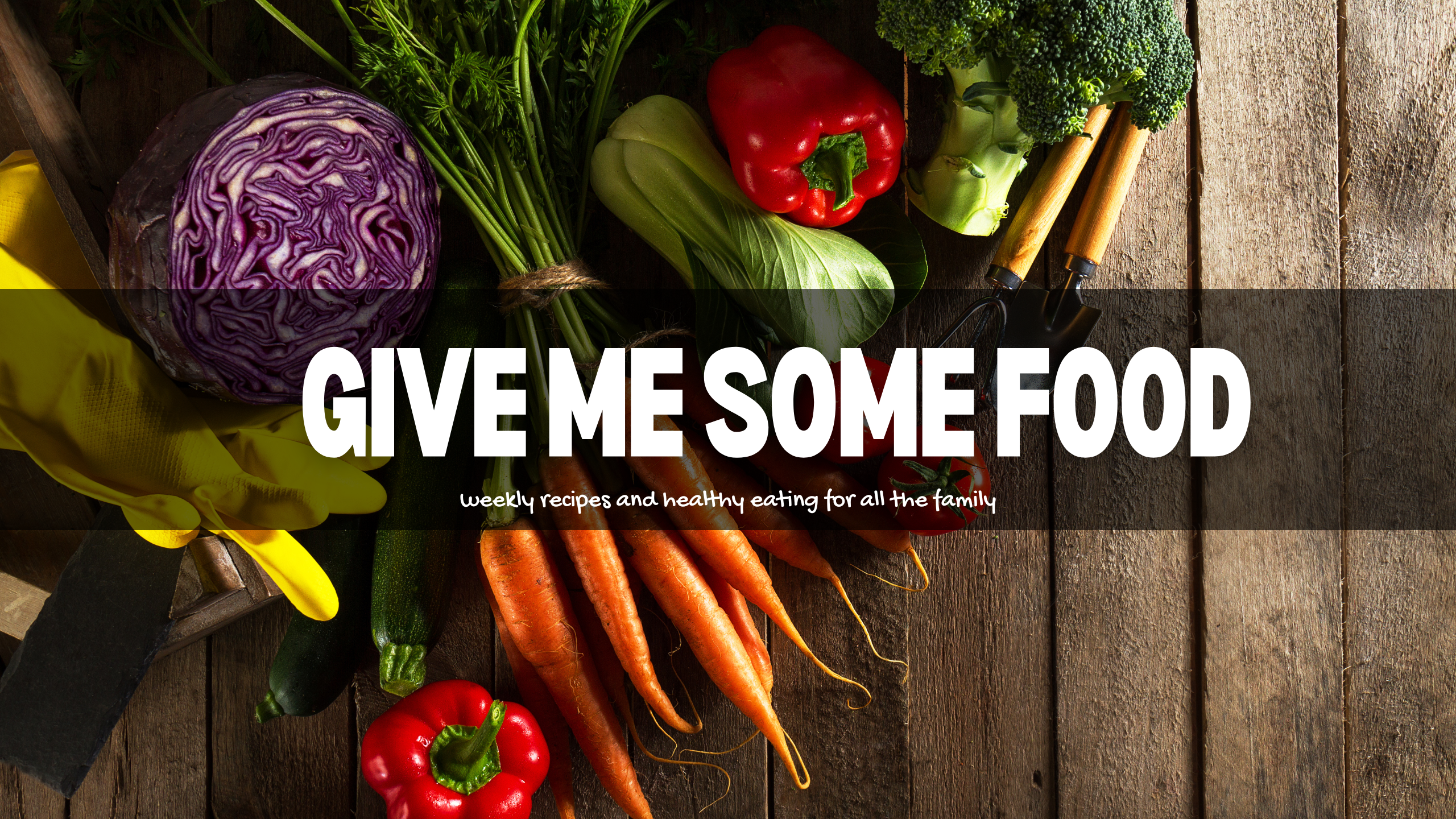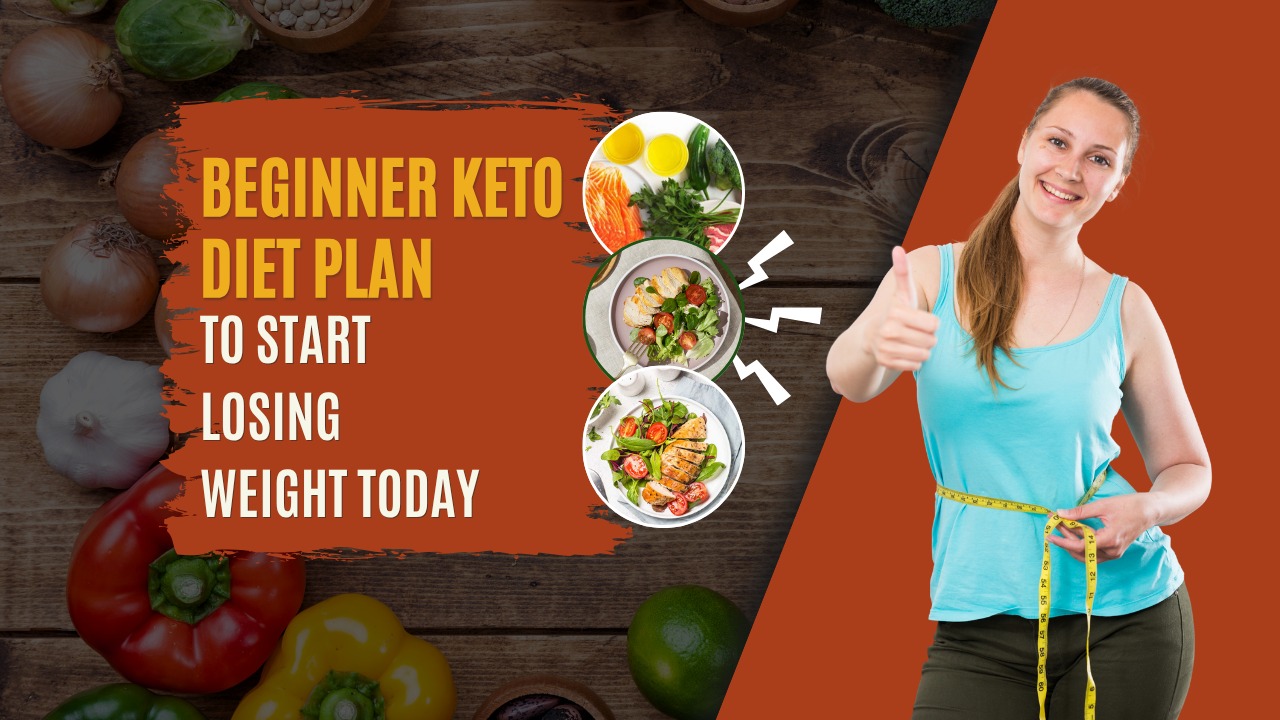Beginner Keto Diet Plan is often packed with excess carbs and sugar, leading to fatigue, bloating, and constant hunger. The beginner keto diet plan offers a powerful alternative by training your body to burn fat instead of carbs for energy. Originally created to manage epilepsy, the keto diet is now widely used for weight loss, improved energy, and mental clarity.
For those new to the keto lifestyle, the beginner keto diet plan focuses on high-fat, low-carb meals that shift your metabolism into a state called ketosis. In this state, your body becomes a fat-burning machine, helping you shed pounds efficiently while feeling more energized and focused throughout the day.
Whether your goal is to lose weight, improve your health, or gain more energy, starting with a beginner keto diet plan can be a game-changer. With proper guidance, preparation, and the right tips, you can kickstart your journey and make keto a sustainable, long-term lifestyle.
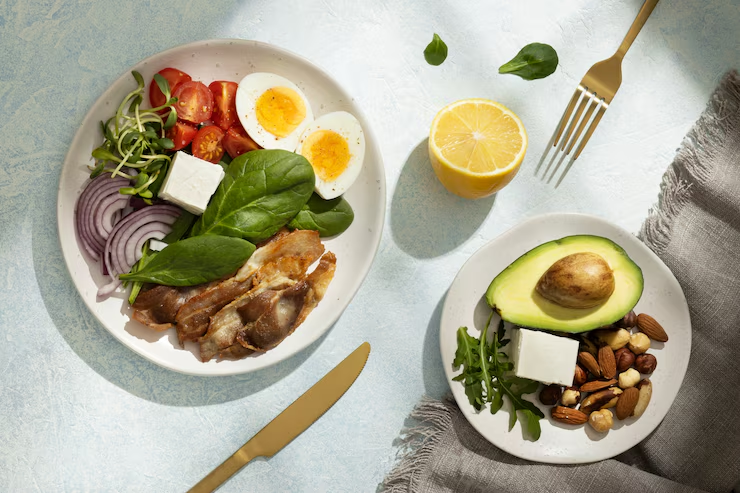
What Is the Keto Diet ?
At its core, the keto diet is a low-carb, high-fat, and moderate-protein eating plan designed to change how your body fuels itself. By drastically reducing carbohydrate intake and increasing healthy fats, the beginner keto diet plan helps shift your metabolism from relying on glucose (sugar) to burning fat for energy.
This metabolic state, known as ketosis, is the foundation of the beginner keto diet plan. When carbs are limited, the liver begins converting fat into ketones, which become the primary energy source for the body and brain. This not only supports weight loss but can also enhance mental clarity and reduce energy crashes commonly caused by sugar.
The beginner keto diet plan is ideal for those looking to lose weight efficiently while improving overall health. With the right balance of macronutrients and a clear understanding of how ketosis works, beginners can experience noticeable changes in energy, appetite, and body composition within weeks.
How It Works: Ketosis Explained
Normally, your body relies on glucose (sugar from carbs) for energy. When you restrict carbs, your body doesn’t have enough glucose for energy and begins to burn fat instead. This process produces molecules called ketones, which become your new fuel source.
Why Choose the Keto Diet ?
The benefits of the keto diet go far beyond weight loss. Here are a few compelling reasons to give keto a try:
Weight Loss: Burn stored fat efficiently.
Stable Energy: No more sugar crashes or afternoon slumps.
Improved Focus: Ketones are great brain fuel.
Reduced Appetite: Fat and protein are more filling than carbs.
Better Blood Sugar Control: Great for those with prediabetes or insulin resistance.
Improved Cholesterol and Heart Health (with proper planning).
Clearer Skin: Some people report improved skin conditions.
When Should You Start Keto ?
Deciding when to begin the beginner keto diet plan depends on your personal goals, health condition, and readiness to commit. Ideally, start during a period when your schedule is calm and free from major events, as the first few days of transitioning into ketosis can bring temporary side effects like fatigue or brain fog—often called the “keto flu.”
It’s also wise to consult your doctor before starting the beginner keto diet plan, especially if you have underlying health issues like diabetes, heart disease, or are taking medications. Your doctor can guide you on safe carb reduction and nutritional adjustments based on your unique needs.
Once you’re prepared mentally and physically, start your keto journey with clear goals, a stocked pantry, and a solid understanding of the diet. Beginning the beginner keto diet plan at the right time can lead to better results and a smoother transition.
The keto diet is not a quick fix—it’s a lifestyle change. So, timing is important. Here’s when to start:
After holidays or high-carb phases (to reset).
When you’re mentally ready for change.
During a quiet period (less stress = easier adjustment).
When you’ve researched and meal prepped properly.
How to Get Into Ketosis Quickly
One of the main goals of the beginner keto diet plan is to enter ketosis—a metabolic state where your body burns fat for fuel instead of carbohydrates. To get into ketosis quickly, start by dramatically reducing your daily carb intake to around 20–30 grams. This signals your body to begin using stored fat for energy.
Increase your intake of healthy fats such as olive oil, coconut oil, avocados, and fatty fish. Moderate your protein consumption to avoid excess protein being converted into glucose. Pair this with intermittent fasting, which can accelerate the body’s transition into ketosis by depleting glycogen stores more rapidly.
Staying hydrated, replenishing electrolytes (sodium, potassium, magnesium), and engaging in light exercise can also help your body adapt faster. When following a beginner keto diet plan, consistency is key—stick to your macros, avoid hidden carbs, and give your body time to adjust.
Cut carbs to 20–50 grams per day.
Increase healthy fat intake (avocados, olive oil, fatty fish).
Moderate your protein intake (too much can prevent ketosis).
Stay hydrated and replenish electrolytes.
Exercise regularly.
Try intermittent fasting.
Top Tips for a Beginner Keto Diet Plan
Clean Out Your Kitchen
Cleaning out your kitchen is a crucial first step when starting a beginner keto diet plan. Removing high-carb temptations like bread, pasta, sugary snacks, and processed foods helps you stay focused and avoid setbacks. A clutter-free, keto-friendly kitchen sets the tone for success and supports better food choices.

Stock your pantry and fridge with keto staples such as eggs, avocados, cheese, nuts, seeds, olive oil, and low-carb vegetables. Having the right ingredients on hand makes it easier to prepare meals that align with your beginner keto diet plan. Planning ahead also reduces the risk of grabbing unhealthy options when hunger strikes.
Creating a supportive environment is essential for sticking to the beginner keto diet plan long term. By eliminating non-keto foods and replacing them with healthy, low-carb alternatives, you create a kitchen that encourages success and makes the transition into ketosis much smoother and more sustainable.
Why: Starting keto means avoiding all high-carb temptations. Clear out bread, pasta, sugary snacks, rice, cereals, soda, and even “healthy” fruits high in sugar like bananas and apples.
Ingredients to Stock:
Eggs
Avocados
Olive oil
Coconut oil
Cheese
Leafy greens
Almond flour
Cauliflower
Benefits: Reduces the risk of cheating and helps you stay committed.
Master Your Macros
Mastering your macros is essential for anyone starting a beginner keto diet plan. Macros—or macronutrients—refer to the three main nutrients your body needs: fats, proteins, and carbohydrates. In keto, the goal is to eat around 70–75% fat, 20–25% protein, and just 5–10% carbs. Getting this balance right is key to entering and staying in ketosis.
For a successful beginner keto diet plan, you need to track what you eat. Using apps or food journals can help you monitor your daily intake and ensure you’re meeting your macro targets. It may take time to get used to reading labels and calculating macros, but consistency pays off with better results.
By mastering your macros, you ensure your body remains in fat-burning mode while avoiding common keto mistakes like too much protein or hidden carbs. A well-balanced beginner keto diet plan keeps you energized, satisfied, and on track toward your weight loss and health goa
Why: The typical keto ratio is:
70–75% fat
20–25% protein
5–10% carbs
Use macro calculators to determine your daily needs.
Ingredients to Include:
Protein: Chicken, salmon, ground beef
Fats: Butter, heavy cream, MCT oil
Low-carb veggies: Broccoli, zucchini, spinach
Benefits: Keeps your body in ketosis and avoids the keto flu.
Meal Prep for Success
Meal prep is a powerful tool for staying on track with your beginner keto diet plan. By preparing your meals in advance, you save time, reduce stress, and avoid impulsive food choices that could kick you out of ketosis. Having ready-to-eat, low-carb meals on hand makes it easier to stick to your daily macro goals.
A successful beginner keto diet plan includes planning a weekly menu, shopping for keto-friendly ingredients, and cooking in batches. Focus on simple meals like grilled meats, leafy greens, avocado-based dishes, and keto snacks such as boiled eggs or cheese sticks. Portioning meals ahead of time also helps with portion control and calorie management.
Meal prep not only supports consistency but also builds confidence in your keto journey. When your fridge is stocked with delicious, pre-prepared options, you’re more likely to stay committed. Proper planning is one of the best strategies to make your beginner keto diet plan a long-term success.
Why: Meal prepping saves time and ensures you don’t grab high-carb foods when hungry or busy.
Plan Ahead Meals:
Egg muffins (eggs, spinach, cheese)
Keto chicken salad (chicken, mayo, celery)
Cauliflower crust pizza
Zucchini noodles with pesto
Benefits: Reduces stress and decision fatigue; promotes consistency.
Stay Hydrated & Balance Electrolytes
Staying hydrated and maintaining electrolyte balance are essential parts of a successful beginner keto diet plan. As your body transitions into ketosis, it sheds excess water, leading to a loss of vital electrolytes like sodium, potassium, and magnesium. Without proper hydration and electrolyte intake, you may experience fatigue, headaches, or muscle cramps—commonly known as the “keto flu.”
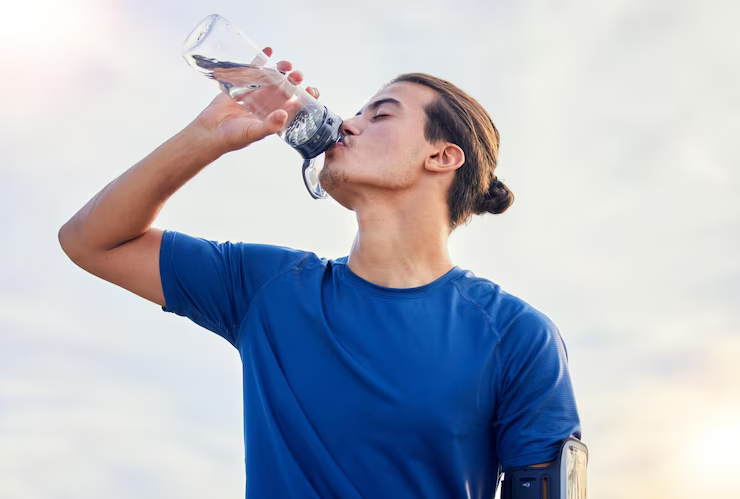
To stay on track with your beginner keto diet plan, aim to drink at least 8–10 glasses of water daily. In addition, include electrolyte-rich foods like leafy greens, avocados, nuts, and seeds in your meals. You can also consider adding electrolyte supplements or drinks with no added sugars to replenish lost minerals.
Balancing hydration and electrolytes not only prevents side effects but also helps you feel more energized and focused. It’s a simple yet crucial step in making your beginner keto diet plan effective, sustainable, and more comfortable during the early stages of adaptation.
Why: On keto, your body excretes more water and electrolytes. Not replenishing these can lead to fatigue, dizziness, and headaches (a.k.a. “keto flu”).
Add to Your Diet:
Pink Himalayan salt
Electrolyte supplements
Bone broth
Avocados (potassium-rich)
Benefits: Avoids keto flu, boosts energy, supports muscle function.
Learn to Read Labels
When starting a beginner keto diet plan, it’s important to know what to watch for to stay on track and avoid common setbacks. In the first week, many people experience symptoms of the “keto flu,” such as fatigue, headaches, dizziness, and irritability. These symptoms are usually temporary and occur as your body adjusts to using fat for fuel instead of carbs.
Another thing to monitor closely is hidden carbs. Many packaged foods and sauces contain more carbohydrates than you might expect, which can disrupt ketosis. Reading food labels carefully and tracking your intake are essential parts of a successful beginner keto diet plan. Also, be cautious of overeating protein, which can be converted into glucose and interfere with ketosis.
Finally, listen to your body. Cravings, energy levels, and digestion can all signal how your beginner keto diet plan is working. Stay informed, make adjustments as needed, and celebrate small victories along the way.
Why: Many processed foods contain hidden sugars and carbs—even things labeled “keto” or “low-carb.”
What to Watch For:
Sugar (glucose, dextrose, maltodextrin)
Artificial sweeteners
Starches
“Net carbs” vs total carbs
Benefits: Keeps you truly low-carb and prevents accidental mistakes.
Embrace Healthy Fats
Embracing healthy fats is a core principle of the beginner keto diet plan. Since this diet relies on fat for energy instead of carbs, it’s crucial to include quality fats in your meals. Healthy fats not only keep you full and satisfied but also support brain function, hormone production, and overall well-being.
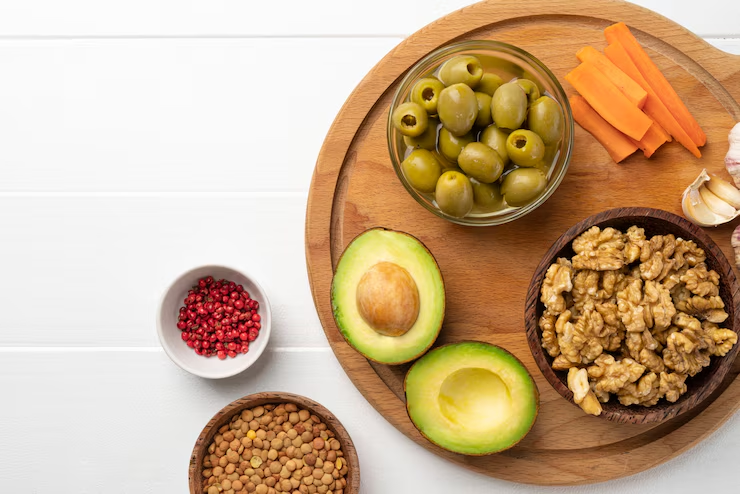
In a beginner keto diet plan, focus on incorporating sources like avocados, olive oil, coconut oil, nuts, seeds, fatty fish, and grass-fed butter. These fats provide essential nutrients and help your body stay in ketosis. Avoid trans fats and highly processed oils, which can negatively impact your health and slow down your progress.
Getting enough fat might feel strange at first, especially if you’re used to low-fat diets, but it’s essential for success on the beginner keto diet plan. By choosing the right fats and balancing your meals, you’ll feel more energized, reduce cravings, and improve your chances of long-term success.
Why: Fat is your new fuel. Not eating enough fat can make you tired and hungry.
Best Fats to Eat:
Avocados
Extra virgin olive oil
Coconut oil
Nuts and seeds (macadamia, walnuts)
Fatty fish (salmon, sardines)
Avoid:
Processed seed oils (canola, corn, soybean)
Benefits: Boosts energy, supports brain health, and improves satiety.
Track Your Progress
Tracking your progress is a key part of staying motivated and successful on a beginner keto diet plan. Monitoring your weight, measurements, and energy levels helps you see how your body is responding to the changes. It also allows you to make informed adjustments to your meals and habits as needed.
Instead of focusing solely on the scale, track non-scale victories like better sleep, reduced cravings, clearer skin, or improved mood. The beginner keto diet plan often brings positive changes beyond just weight loss, and keeping a record of these benefits can keep you inspired and consistent throughout your journey.
Use a journal, app, or progress photos to stay accountable. Seeing your results over time reinforces your commitment to the beginner keto diet plan and gives you a clear picture of what’s working. Regular tracking keeps you focused, celebrates your progress, and helps you stay on course toward your health and fitness goals.
Why: Monitoring helps you stay motivated and adjust your diet.
Track:
Weight
Inches
Energy levels
Mood
Ketone levels (optional: using urine strips or blood meters)
Benefits: Seeing progress keeps you motivated and helps troubleshoot plateaus.
Be Patient and Stay Consistent
Being patient and staying consistent are vital for success with the beginner keto diet plan. While some people may see quick results, others may take longer to enter ketosis and notice changes. It’s important to remember that lasting weight loss and health improvements don’t happen overnight.
The beginner keto diet plan requires your body to adapt to using fat for fuel instead of carbohydrates. This transition period can bring temporary challenges like cravings or fatigue, but these typically pass within the first week or two. Staying consistent with your meals, hydration, and macros will help you move past these early hurdles.
Long-term success on the beginner keto diet plan comes from forming habits and trusting the process. Celebrate small wins, track your progress, and don’t get discouraged by occasional setbacks. With patience and commitment, you’ll not only see physical changes but also build a healthier lifestyle that’s sustainable and rewarding.
Why: Keto isn’t a magic pill. Your body may take days or even weeks to fully adapt.
Tips for Patience:
Set realistic goals
Join a keto community for support
Remind yourself why you started
Benefits: Sustainable weight loss, better long-term health, and reduced cravings over time.
Keto-Friendly Grocery List for Beginners
Here’s a starter shopping list:
Proteins:
Chicken thighs and breasts
Ground beef (80/20)
Bacon (sugar-free)
Salmon and sardines
Eggs
Fats & Oils:
Butter (grass-fed)
Ghee
MCT oil
Coconut oil
Avocados
Vegetables (Low-Carb):
Spinach
Kale
Broccoli
Cauliflower
Zucchini
Cabbage
Pantry Essentials:
Almond flour
Coconut flour
Stevia or erythritol
Psyllium husk
Bone broth
Sample 1-Day Beginner Keto Meal Plan
Here’s your sample beginner keto diet plan in a clear table format:
| Meal | Menu |
|---|---|
| Breakfast | Scrambled eggs in butter with spinachHalf an avocadoBlack coffee or tea |
| Lunch | Chicken salad with olive oil mayo, celery, and leafy greensCheese slices |
| Snack | Handful of macadamia nutsCucumber slices with guacamole |
| Dinner | Grilled salmon with lemon butter sauceRoasted broccoli and cauliflower |
| Dessert (Optional) | Keto chia seed pudding with almond milk and vanilla extract |
This simple yet nutritious beginner keto diet plan provides healthy fats, moderate protein, and low carbs to help your body enter and stay in ketosis.
Conclusion
The beginner keto diet plan has the potential to transform your health, energy, and overall lifestyle—but it takes patience, knowledge, and proper planning. Understanding how the keto diet works and applying these 8 beginner-friendly tips can help you create a strong foundation for long-term, sustainable success.
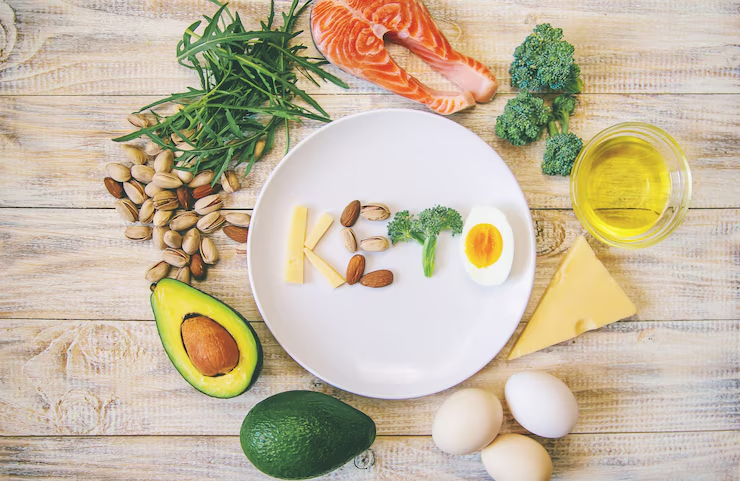
Remember, the goal isn’t perfection—it’s progress. You might face challenges as your body adjusts to using fat as its primary fuel source, but every healthy choice brings you closer to your goals. Some days will feel easier than others, and that’s perfectly normal during the early stages of your beginner keto diet plan.
Stay committed, be kind to yourself, and listen to what your body needs. With consistency and the right mindset, you’ll begin to experience the many benefits of ketosis, from weight loss to improved focus and energy. Trust the process, and let your beginner keto diet plan lead you toward a healthier, more vibrant you.
FAQs
Q1. What is a beginner keto diet plan ?
A beginner keto diet plan is a structured eating approach designed to help your body shift from burning carbohydrates to burning fat for fuel. It typically includes high-fat, moderate-protein, and very low-carb meals that promote a state called ketosis. This plan is ideal for individuals new to the ketogenic lifestyle and aims to simplify the transition while providing essential nutrients.
Q2. What foods can I eat on a beginner keto diet plan ?
The beginner keto diet plan emphasizes whole, low-carb foods. You can eat meats, eggs, fatty fish, cheese, avocados, nuts, seeds, leafy greens, and low-carb vegetables. Healthy fats like olive oil, coconut oil, and butter are encouraged. Avoid sugary foods, bread, pasta, rice, and most fruits, as they are high in carbohydrates and can prevent ketosis.
Q3. How long does it take to see results on a beginner keto diet plan ?
Most people begin to notice changes within the first week of starting a beginner keto diet plan, such as reduced appetite and slight weight loss. Full results, including increased energy and improved mental clarity, usually appear after 2–4 weeks as your body adapts to ketosis. Consistency and proper tracking are key to seeing long-term success.
Q4. Will I experience side effects on a beginner keto diet plan ?
Yes, some beginners may experience short-term side effects, commonly called the “keto flu.” Symptoms may include fatigue, headaches, nausea, and irritability during the first few days of a beginner keto diet plan. These effects are usually temporary and can be managed by staying hydrated, increasing electrolytes, and getting enough rest.
Q5. Do I need to count calories on a beginner keto diet plan ?
While not always necessary, tracking calories can help with portion control and ensure you’re in a caloric deficit if weight loss is your goal. However, the beginner keto diet plan mainly focuses on maintaining the correct macronutrient ratios—about 70% fat, 25% protein, and 5% carbs—to reach and sustain ketosis.
